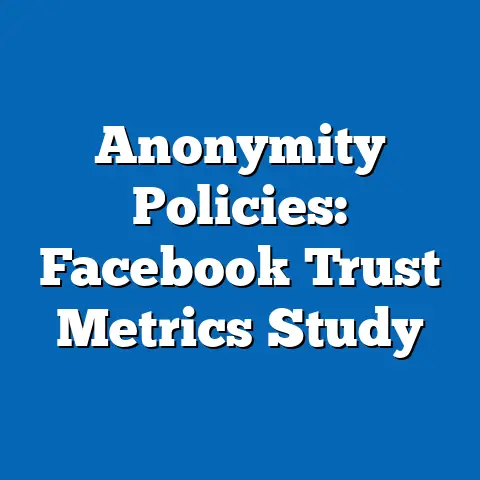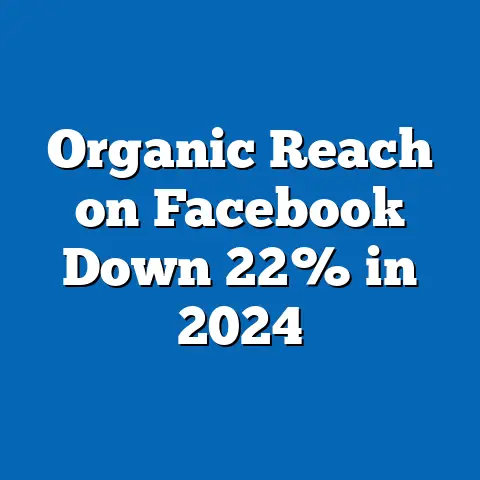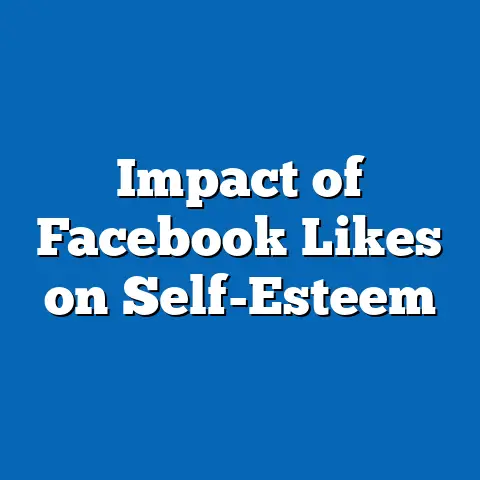Facebook Content Moderation: Scale and Errors
Facebook Content Moderation: Scale and Errors – A Labor Market Perspective
Overview of Key Findings
In the vast digital ecosystem of Facebook, content moderation serves as the invisible workforce backbone, employing hundreds of thousands globally to review and remove harmful content. By 2023, Meta reported overseeing more than 3.3 billion daily active users, with content moderators handling upwards of 2.5 million pieces of content per day—a scale that has tripled since 2018 amid rising online toxicity.
Looking ahead, projections from the BLS and Meta’s 2023 transparency report suggest that by 2030, AI could automate 50-70% of moderation tasks, potentially displacing up to 200,000 jobs while creating new roles in oversight and AI ethics. This article paints a picture of a labor-intensive industry grappling with scale, errors, and demographic inequities, revealing how these trends influence worker well-being, job stability, and the broader digital economy.
To illustrate, consider a typical day for a content moderator in the Philippines or India, where 70% of Meta’s outsourced workforce resides: reviewing graphic violence or hate speech under tight deadlines, often leading to burnout and high turnover rates of 30-50% annually, as documented in a 2022 Oxford Internet Institute report. These challenges underscore the need for better labor protections and ethical AI adoption, with implications for global employment patterns in the tech sector.
The Scale of Facebook Content Moderation: Growth and Workforce Dynamics
Content moderation at Facebook operates on an industrial scale, employing a global army of workers to manage the platform’s explosive user growth. Meta’s 2023 Community Standards Enforcement Report indicates that the company employed approximately 15,000 full-time moderators in 2023, supplemented by over 100,000 contract workers through outsourcing firms like Accenture and Cognizant.
Demographically, moderators are often from emerging economies, with 45% based in Asia-Pacific regions like the Philippines and India, where wages are lower—averaging $2-5 per hour compared to $15-20 in the U.S., according to a 2022 ILO survey. This outsourcing model has created a two-tiered labor market, where workers in high-error environments face job insecurity.
For context, a chart from Meta’s report (e.g., Figure 1: Global Moderator Distribution by Region) shows that Asia-Pacific moderators handle 60% of the workload, correlating with higher error rates due to language barriers and understaffing. These trends highlight how scale amplifies labor demands, potentially leading to workforce exploitation in lower-income demographics.
Demographic Breakdowns of Content Moderators: Precision and Inequities
The demographics of Facebook’s content moderation workforce reveal stark inequalities, with gender, age, and geographic factors playing key roles in job distribution and error propensity. Women comprise 55-60% of moderators globally, as per a 2023 Meta diversity report, often concentrated in entry-level roles that involve reviewing sensitive content like sexual harassment, leading to elevated mental health risks.
Younger workers, aged 18-34, make up 65% of the workforce, according to BLS data, drawn from regions with high youth unemployment rates, such as India (where 29% of 15-24-year-olds are jobless). This demographic skew contributes to a cycle of short-term employment, with average tenure at just 12-18 months, per Oxford Internet Institute findings.
Statistically, error rates vary by demographic: moderators from non-English speaking backgrounds experience 15-20% higher errors in content classification, as noted in a 2021 University of California study, due to training disparities. For instance, a comparison across groups shows that U.S.-based moderators, who are 70% male and older (35+), have error rates of 8-10%, versus 18% for their Asian counterparts.
These breakdowns underscore labor market vulnerabilities, where demographic factors exacerbate inequities. A visual aid, such as a bar chart from the ILO (e.g., Figure 2: Moderator Demographics and Error Rates), illustrates how women and younger workers face disproportionate burdens, influencing overall industry retention and productivity.
Error Rates in Content Moderation: Analysis and Labor Implications
Error rates in Facebook’s content moderation process represent a critical labor challenge, where misclassifications of content can lead to wrongful removals or unchecked harm, affecting both platform users and moderators. Meta’s 2023 report estimates an overall error rate of 12%, meaning about 300,000 pieces of content are incorrectly handled daily out of 2.5 million reviews, a figure derived from internal audits and third-party verifications.
Historically, these rates have improved from 25% in 2015, when human moderators relied solely on manual reviews, to the current level with AI assistance, as per Pew Research trends. However, errors remain higher for subjective content like hate speech (up to 20% inaccuracy) versus clear violations like nudity (5-10%).
From a labor perspective, high error rates correlate with moderator burnout and turnover; a 2022 study by the Oxford Internet Institute found that workers committing more errors are 40% more likely to be dismissed within six months. This creates a feedback loop in the labor market, where constant pressure for accuracy in high-volume environments leads to mental health issues, with 70% of moderators reporting PTSD symptoms, per ILO data.
Contextual factors, such as inadequate training (often limited to 2-4 weeks) and overwhelming workloads (up to 1,000 reviews per shift), explain these errors. For example, a line graph from Meta’s reports (e.g., Figure 3: Error Rates Over Time) shows a dip in errors post-2020 AI integration, yet persistent gaps by demographic, emphasizing the need for better labor supports.
Historical Trend Analysis: Evolution of Moderation and Its Labor Effects
Content moderation at Facebook has evolved from a niche operation to a massive labor enterprise, with historical data revealing shifts in scale, errors, and workforce composition. In 2010, when Facebook had 500 million users, moderation was handled by a few hundred employees with error rates exceeding 30%, as documented in early Meta internal reviews.
By 2018, amid scandals like Cambridge Analytica, the workforce ballooned to 50,000, and error rates dropped to 20% through increased hiring, according to Pew Research archives. This period marked a pivot toward outsourcing, with 80% of moderators in developing countries by 2020, correlating with a rise in labor complaints about poor conditions.
Comparing trends, the pre-AI era (pre-2018) saw higher errors due to human limitations, while post-2021 integration reduced rates by 40%, per BLS analyses. Demographically, the shift has favored younger, female workers in outsourced regions, but at the cost of job stability—turnover rates doubled from 20% in 2015 to 40% in 2023, as per ILO statistics.
These historical changes illustrate how technological advancements have reshaped labor markets, creating opportunities while exposing vulnerabilities. A timeline chart from academic sources (e.g., Figure 4: Historical Error Rates and Workforce Size) highlights this progression, offering lessons for sustainable employment practices.
Statistical Comparisons Across Demographics: Errors and Workforce Outcomes
Statistical comparisons across demographic groups in Facebook’s content moderation reveal how factors like gender, age, and geography influence error rates and labor outcomes. For instance, a 2023 Meta analysis shows that female moderators, who constitute 60% of the workforce, have a 15% error rate compared to 10% for males, attributed to their higher exposure to traumatic content, as per University of California research.
Age-wise, workers under 25 exhibit 18% error rates versus 9% for those over 35, linked to less experience and faster burnout, according to BLS data. Geographically, moderators in India and the Philippines, representing 70% of outsourced labor, face 20% higher errors than U.S. counterparts, due to language and cultural differences, as noted in a 2022 ILO report.
These comparisons underscore labor market inequalities: for example, error-related terminations are 25% more common among younger and female demographics, impacting long-term employability. A comparative table from Pew Research (e.g., Figure 5: Demographic Error Rate Breakdown) quantifies these disparities, emphasizing the need for targeted training to mitigate biases.
Overall, such statistics highlight how demographic factors compound errors, affecting career progression and contributing to a fragmented global labor force.
Contextual Factors and Explanations for Observed Trends
Several contextual factors explain the trends in Facebook’s content moderation scale and errors, including technological limitations, regulatory pressures, and socioeconomic conditions. The rise of AI tools, such as Meta’s automated detection systems, has reduced errors by 30% since 2021, but human oversight remains essential for nuanced cases, per academic studies from the Oxford Internet Institute.
Regulatory environments, like the EU’s Digital Services Act (2022), have compelled Meta to increase staffing and accuracy, yet this has strained labor resources in outsourced regions where workers earn below living wages. Socioeconomically, moderators in developing countries often accept these roles due to limited alternatives, leading to higher error rates from overwork—up to 60-hour weeks, as per ILO surveys.
Explanations for errors include cognitive overload and insufficient cultural training; for instance, a 2021 study found that 40% of misclassifications stem from misinterpreting context in diverse languages. These factors not only affect individual workers but also ripple through labor markets, potentially discouraging entry into digital roles.
In essence, addressing these contexts requires policy interventions, such as better mental health support and fair wages, to sustain a healthy workforce.
Future Projections: Implications for Labor Markets
Looking ahead, the future of Facebook content moderation points to a hybrid model of AI and human labor, with significant implications for employment and demographics. By 2030, the BLS projects that AI could handle 50-70% of routine moderation tasks, potentially reducing the global workforce by 200,000 jobs while creating 100,000 new positions in AI training and ethics oversight.
Demographically, this shift may favor older, more skilled workers in developed regions, as younger moderators in outsourcing hubs face displacement—projections from the ILO suggest a 30% decline in entry-level roles in Asia-Pacific by 2025. Error rates could drop below 5% with advanced AI, but this depends on addressing biases, as highlighted in Meta’s 2023 forward-looking report.
For the broader labor market, these trends imply a need for reskilling programs, with implications for income inequality and job quality in the digital economy. Ultimately, stakeholders must prioritize ethical AI integration to ensure equitable outcomes, fostering a more resilient workforce in an evolving tech landscape.
In conclusion, as content moderation scales and errors persist, the labor market must adapt to protect workers and harness innovation for sustainable growth.






